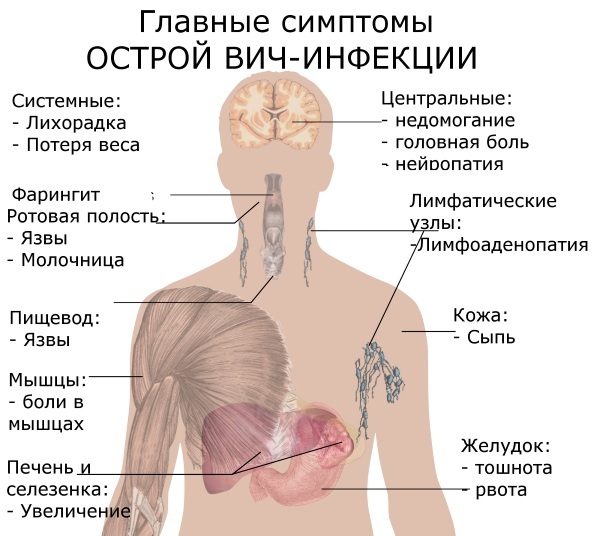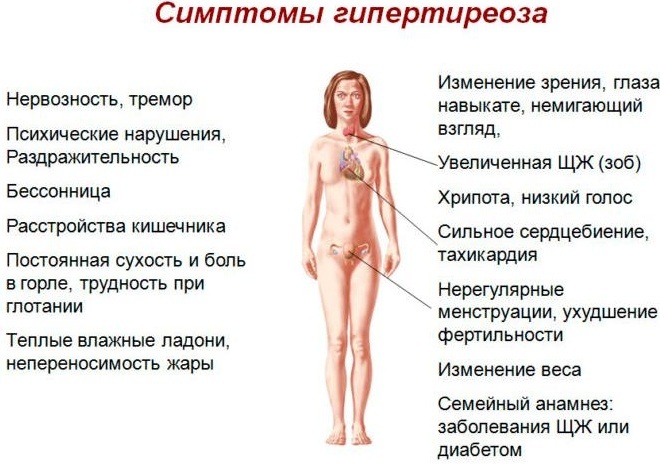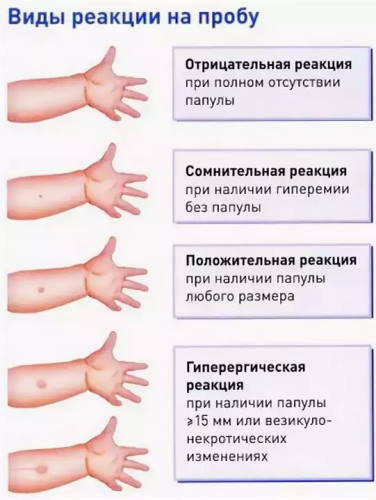Content
- Possible reasons
- Natural and external causes
- Infectious diseases
- Parasites
- Diseases of internal organs and systemic pathologies
- Hormonal pathologies
- Diseases of the thyroid gland
- Psychological problems
- Diagnostics
- Treatment methods
- Traditional medicine recipes
- Possible consequences and complications
- Video about a temperature of 37 degrees
Usually subfebrile condition in an adult not dangerous if the heat does not rise too sharply. However, this state cannot be called normal either. It is important to consider the reasons for this phenomenon. If you suspect the presence of a pathology, you should immediately seek the advice of a specialist and undergo diagnostic procedures. It happens that the temperature lasts for a week for a week for a week. This is an alarming symptom.
Possible reasons
Temperature 37 lasts a week (the reasons for an adult are different) with and without concomitant symptoms. Indicators can constantly change: rise, fall or fluctuate. The definition of the provoking factor is important.
Subfebrile condition can be caused by a hidden pathological process or serve as a sign of incubation of the penetration of the virus into the body. The most common factors are inflammation in the internal organs and an allergic reaction.

Hyperthermia, accompanied by pain in the abdomen, can be caused by bacteria that have multiplied in the intestines, or by a helminthic invasion. If a sore throat and a runny nose join, then ARVI is usually diagnosed.
Natural and external causes
Temperature 37 lasts a week (the reasons for an adult are clarified after a thorough diagnosis), usually in the following cases:
- overstrain of the nervous system;
- physical overloads;
- asthenic condition;
- increased food intake;
- failure of hormonal levels;
- violation of body thermoregulation;
- failure of the immune system;
- a reaction to a vaccine;
- the presence of an intoxication process;
- hangover syndrome;
- lactation period.
In case of poisoning with poisonous substances or alcoholic beverages, the indicator may increase due to the content of their decay products in the blood. The process causes severe intoxication. Metabolism in the body becomes more intense, sweat production increases. Sometimes these symptoms mask other diseases. Therefore, it is advised to undergo diagnostic measures.
Infectious diseases
Subfebrile condition can cause many infectious diseases. A rise in temperature is provoked after the penetration of the virus into the body.
Pathologies of this series include:
- ARVI;
- enterovirus;
- salmonellosis;
- cystitis;
- urethritis;
- syphilis;
- tuberculosis.
Very often, subfebrile condition is observed in men and women with STDs. This figure is observed with chronic nephritis, as well as gastrointestinal lesions.
As a rule, the indicator rises to a subfebrile level when:
- sore throat;
- inflammation of the maxillary sinuses;
- otitis;
- bronchitis;

- pneumonia;
- laryngitis;
- tonsillitis;
- sinusitis.
More often subfebrile condition indicates an existing cold. It is necessary to monitor for pain during swallowing movements, aches in the joints, cough, runny nose and headaches.
After the disappearance of these signs, hyperthermia can bother for a long time. This is due to the fact that the immune system is undergoing a recovery stage. The body suppresses the residual effects of the disease, and thermoregulation is stabilized. If no pathological symptoms are observed anymore, then there is no cause for concern. With the elimination of all symptoms, final recovery occurs.
Parasites
Temperature 37 lasts a week with helminthic invasion. The process provokes the activation of immunity. The latent phase of the lesion, accompanied by a temperature of 37, usually lasts a week until the parasites begin to multiply.
The reasons for an adult can also lie in the development of a dangerous pathology - toxoplasmosis. It can occur with erased symptoms, characterized only by hyperthermia. If the pathology is diagnosed in a woman carrying a child, then helminthiasis most often provokes a miscarriage.
Diseases of internal organs and systemic pathologies
The table shows the main causes and symptoms:
| Long-term development of inflammatory processes | Usually, a person may have symptoms of rheumatism, arthritis, colitis, enteritis. |
| Allergic reaction of the body (dermatitis, bronchial asthma and urticaria) | With dermatoses, in addition to the temperature of the patient, itching and redness of the skin is worried. Bronchial asthma is characterized by coughing and shortness of breath. |
| Dental problems | There is extensive inflammation in the oral cavity or the development of an abscess. |
Permanent minor changes in indicators can be recorded when:
- disorders of the nervous system of a functional nature, inflammation of its peripheral zones;
- cancerous tumors;
- HIV.

A rise in temperature to 37 can be triggered by residual effects after surgery, heart attack, pneumonia. The patient often experiences fever with VSD, Addison's disease, persistent arterial hypertension. Usually complaints are presented for headache, asthenia, lack of appetite.
Hormonal pathologies
The temperature of 37 lasts a week (the reasons in an adult are often caused by a failure of the hormonal background) in case of dysfunction of the female genital organs. In this case, persistent hyperthermia and a sharp fluctuation in the emotional background are noted.
Subfebrile condition in women can be observed in the following conditions:
- dysfunction of the adrenal glands;
- the period of maturation of the egg;
- pregnancy;
- menopause;
- puberty;
- uncontrolled use of contraceptives;
- ovarian cyst;
- ectopic pregnancy.
In case of hormonal disorders, the fairer sex complains of asthenia, drowsiness, low mood. Women have impaired memory and attention, an increase in body weight. It happens that with hormonal disorders, the temperature is 37 for a week. Medical observations show that this symptom occurs quite often.
Diseases of the thyroid gland
If the functionality of the thyroid gland fails, diseases such as hyperthyroidism and hypothyroidism can be diagnosed. Often, pathologies of the endocrine system are accompanied by a rise in temperature, impaired water-salt metabolism and nervous exhaustion.
Also, patients complain of increased sweating and a constant feeling of heat. Severe symptoms are observed with hyperthyroidism. Pathology involves the production of an increased amount of hormones that are released into the blood.
Psychological problems
Temperature 37 lasts a week (the reasons for an adult are described in this article) in some cases with overloads of the nervous system. Excitement provokes a violation of the functionality of the immune system and endocrine glands. Stress hormones are responsible for human self-defense and act as a biological adaptation to an adverse situation.
The condition is characterized by:
- a feeling of constant anger;
- internal stress;
- aggression;
- hyperhidrosis;
- headache;
- asthenia;
- dizziness;
- increased blood pressure;
- change of mood.
A dysfunction called "thermoneurosis" was identified by medical specialists.
More often this condition is provoked:
- prolonged physical overload;
- intense participation in sports competitions;
- strong nervous shock;
- many hours of flights;
- overheating in the sun.
Another reason for an increase in temperature can be a malfunction of the thermoregulation system. It can act as a separate condition, and also serve as a sign of impaired functionality of the hypothalamus. With such a pathology, subfebrile condition can be noted for a week or more.
Diagnostics
Whatever the reasons for the rise in temperature to around 37, it is advised to seek the advice of a specialist. The therapist will take the patient's anamnesis, prescribe a general blood and urine test, and a feces examination for helminthic invasion. It will also take swabs from the throat, nose, female genital organs, and urethra.
It is recommended to do:
- Mantoux reaction;

- test for HIV;
- diaskintest;
- PCR for the presence of an infectious agent;
- fluorography;
- radiography;
- computed or resonance imaging;
- ultrasound scanning;
- electrocardiogram;
- electroencephalogram.
If certain diseases are detected, you should visit narrow-profile specialists:
- otolaryngologist;
- surgeon;
- gynecologist;
- urologist;
- allergist;
- gastroenterologist;
- dentist;
- neurologist;
- oncologist;
- cardiologist.
After the diagnosis of the disease, an appropriate therapeutic regimen will be carried out. In the absence of pathology, the specialist will prescribe a set of therapeutic measures that can reduce the temperature indicators.
In Moscow, a complete examination of the body will be from 9300 to 17000 rubles. In Samara, this service will cost from 6,000 to 15,000 rubles.
Treatment methods
You should not reduce the subfebrile index, which is not accompanied by concomitant symptoms, even if it lasts for a week. With an artificial fight, the body ceases to fight the infection, and recovery is delayed.
The use of antipyretic drugs is justified in the following cases:
- third trimester of pregnancy;
- functional disorders of the nervous system;
- inflammation of the respiratory system;
- pathological processes of the cardiac system.
Immediate access to a specialist is required if the temperature suddenly rises to a high mark.
Also, you should not ignore the visit to the doctor with the manifestation of the following accompanying symptoms:
- intense cough;
- sternum pain;
- the urge to nausea;
- violation of urine secretion;
- labored breathing.
An increase in body temperature is more often a sign of the development of an inflammatory process. Quick relief of a cold or flu is not achievable, but the fever can be lowered to relieve the patient's condition.
With a slight increase in the mark, antibiotics are usually prescribed. But in most cases, taking an antipyretic agent is sufficient. Do not use medications right away. You can bring down the fever in other ways.
Usually assigned:
- Drinking plenty of fluids. When the temperature is raised, the human body becomes dehydrated during the first day of the disease. Therefore, its replenishment is required. Drinking beverages provides cooling to the body. To eliminate acute respiratory diseases, it is advised to use tea with lemon, honey, sprigs of raspberries or currants. Natural berry fruit drinks have a high effect.
- Rubdown with vodka. A towel dampened with a drink is used. The evaporation of alcohol from the skin provides cooling to the body. After the procedure, a sick person may complain of a feeling of coldness, as well as chills. But this is not a cause for concern, but a common reaction. Vodka can be substituted with edible vinegar.
- Enema. Intense fever can be eliminated with an enema based on an antipyretic agent dissolved in water. This method of treatment is used when other methods do not help, and the temperature lasts for a long time.
Antipyretic drugs should be handled with caution. Their reception is shown in the presence of temperature during the day and an increase in indicators to critical levels. A wide range of medicines of this series are presented in pharmacies. The most popular are Paracetamol, Ibuprofen, Aspirin.
It should be noted that antipyretic drugs and antibiotics have a number of side effects. With their excessive consumption, allergies, intoxication and even a blood clotting disorder can develop. The drugs have a negative effect on the gastric mucosa.
Traditional medicine recipes
Folk remedies have a high level of effectiveness. Their action is soft and harmless.
Commonly used:
- Cold compresses. They are applied to the area of the temples of the forehead, palms, bends of the elbows. Hold for about 40 seconds, after which they are again moistened with water. The procedure is repeated.
- Drying with cool water. This method allows you to reduce the heat by a few degrees. You can add vinegar to the water. Before carrying out the manipulation, the patient must take off his clothes. The solution is used to wipe the entire body, even the face. Do not wipe off moisture on the skin. When it evaporates, the water causes the body to cool.
- Rubdown with a decoction based on green grapes. You can also use its juice.
- Raw potato compresses. The vegetable is grated on a fine grater. 1 tbsp is added to it. l. vinegar. The mixture is laid out on a thin damp cloth and rolled up. The compress is applied to the area of the temples, forehead, bends of the elbows and wrist.
- A mixture based on grated horseradish, vinegar and table salt. Ingredients are taken in a 2: 1: 1 ratio. The product is applied to the area of the palms, feet and calves.
- Onion-based blend. Take 100 ml of honey, mashed vegetables and apples. Everything mixes up. Puree is taken with a feeling of chills and fever in 1 tbsp. l. at least 2 times a day.
- Onion infusion. A medium-sized vegetable, peeled and crushed to a gruel state. Then it is poured with 2 cups of boiling water. The container with the mixture is wrapped in a warm cloth and infused until morning. The finished product is used 50 ml every hour.
- Infusion on raspberries. It contains natural salicylic acid. Two tablespoons of berries are poured with a glass of boiling water, infused for 3 hours. The drink is completely drunk.
- A mixture of lime blossom and dried raspberries. The ingredients are taken in equal proportions, one tablespoon each. Then 400 ml of boiling water is added to the mixture. It should be boiled over low heat for a minute. For colds, it is advised to drink this tea more often.
 Effectively eliminates the temperature of wild strawberry honeysuckle. You can make jam from berries. Cranberry juice also helps. It is drunk in a glass 3 times a day. It is useful to add a little honey to berry drinks.
Effectively eliminates the temperature of wild strawberry honeysuckle. You can make jam from berries. Cranberry juice also helps. It is drunk in a glass 3 times a day. It is useful to add a little honey to berry drinks.
Possible consequences and complications
There are only a few cases in which subfebrile temperature should not be eliminated:
- pregnancy;
- menopause;
- lactation;
- violation of thermoregulation in infancy;
- a period of 1-2 hours a month after an infectious disease.
In all other situations, subfebrile temperature is regarded as a dangerous sign. It is not the very fact of its presence that is alarming, but the impact of an incomprehensible cause, which can lead to significant complications.
If the temperature of 37 is kept in an adult for a week, then it helps to stop the reproduction of pathogenic bacteria. It should be noted that subfebrile condition is the reason for the acceleration of metabolism, weight loss and the development of asthenia.
Video about a temperature of 37 degrees
Malysheva about temperature 37:



